Overview
First impression of Flamingo
Welcome to the enchanting world of African Flamingo, where elegance meets vibrant wilderness. These striking birds, known for their distinctive pink plumage and iconic stature, grace the diverse landscapes of Africa with their presence. Let’s delve into the fascinating realm of these captivating creatures.
In the heart of the continent’s saline lakes, mudflats, and lagoons, African Flamingos thrive, creating breathtaking scenes against the backdrop of nature’s wonders. Their unmistakable pink coloration, derived from a diet rich in carotenoids, sets them apart as true symbols of grace and beauty.
Curious about vibrant Turaco ?
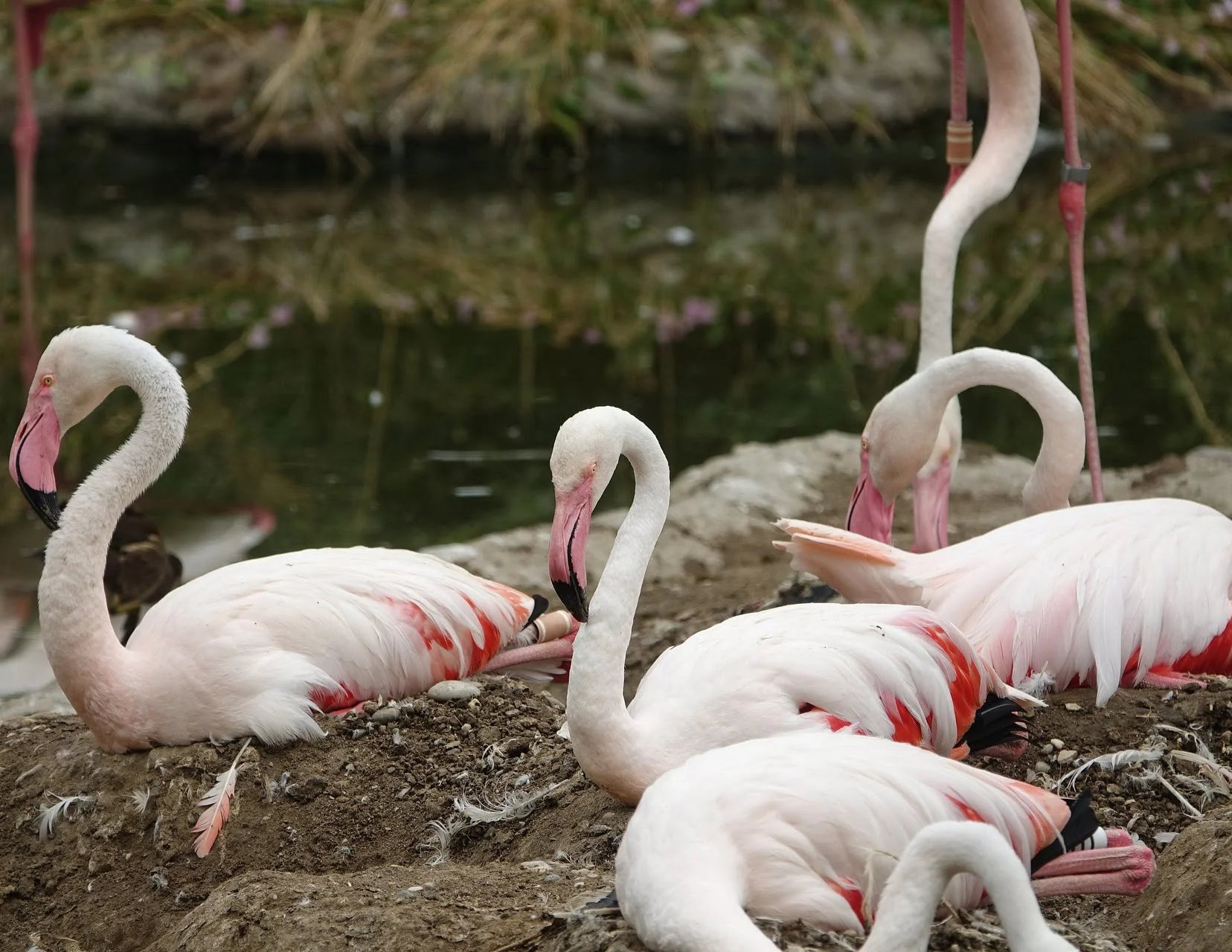

Appearance
How does Flamingo look like?
Picture the African Flamingo, a true head-turner in the bird kingdom! These birds strut about with their long, graceful legs – a bit like nature’s supermodels.
The spotlight is their vibrant pink plumage. It’s like they’ve taken a dip in a palette of algae and crustaceans. Adding to their allure, the African Flamingo sports a slender neck, giving it a regal vibe as it glides through shallow waters. And that downward-bending bill is equipped with a filter-feeding mechanism, it’s their secret weapon for extracting tiny organisms from the water.
And when these beauties take flight. Their expansive wings reveal a touch of black, creating a stunning contrast.
Ready to know about Secretary bird ?
Greater Flamingo
(Phoenicopterus roseus)

- The greater flamingo is the largest and most widespread species of flamingo in Africa.
- It is found in East(Lake Nakuru and Amboseli), Southern, and West Africa.
- Greater flamingoes are known for their striking pink plumage.
- The greater flamingo is a tall, slender bird with a long neck and legs.
- It has pale pink plumage, a black beak, and red legs.
Lesser Flamigo
(Phoenicopterus minor)
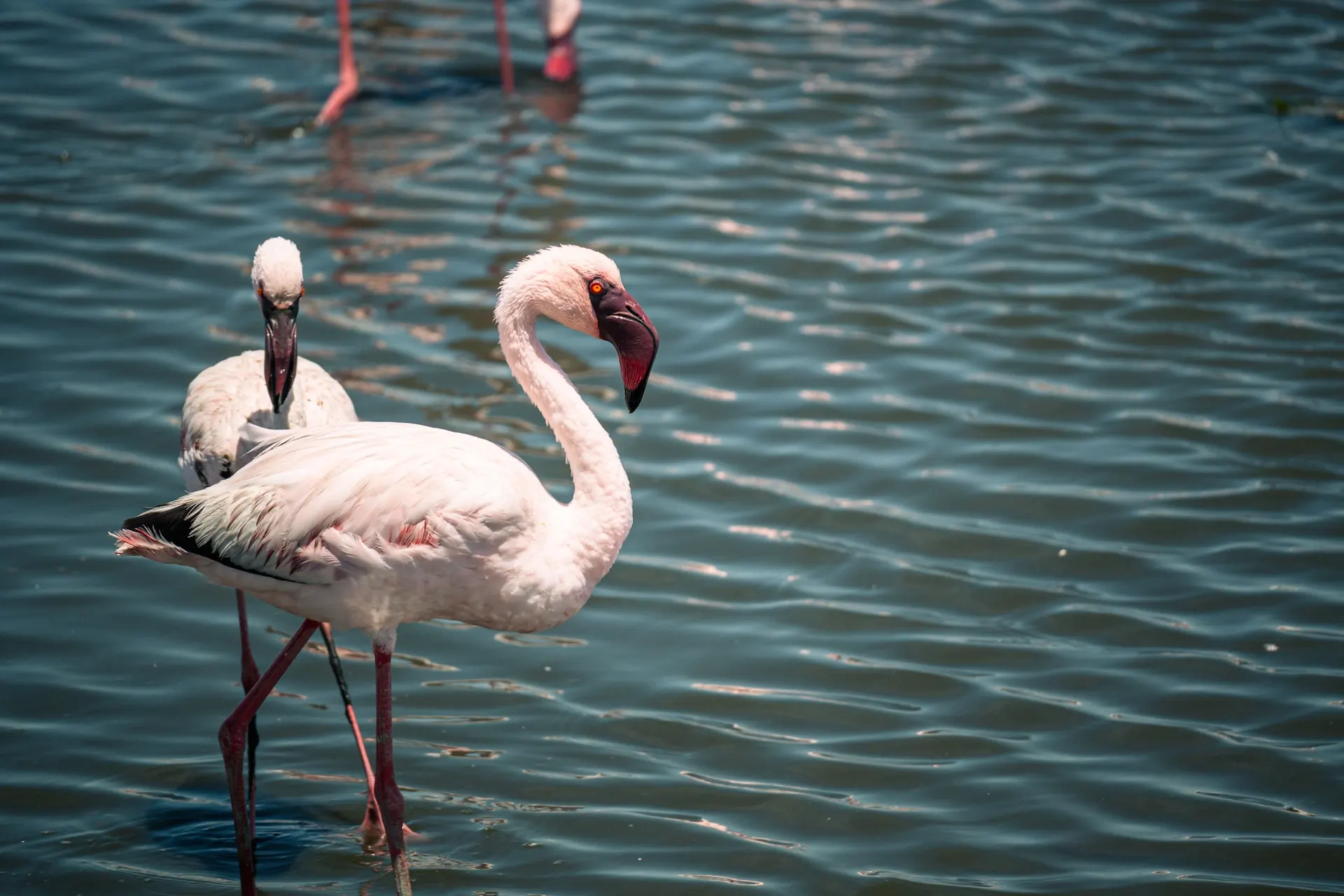
- The lesser flamingo is the smallest species of flamingo in Africa.
- It is found in East Africa(Lake Nakuru and Amboseli) and Western India.
- Lesser flamingoes are known for their pale pink plumage, which is less vibrant than that of the greater flamingo.
- The lesser flamingo is a shorter, stockier bird with a shorter neck and legs than the greater flamingo.
- It has pale pink plumage, a black beak, and yellow legs.
Key Difference Between Greater and Lesser flamingo
| Type | Height | Weight | Wingspan | Beak Size | Neck Length |
|---|---|---|---|---|---|
| Greater Flamingo | 130 cm | 9 kg | 140-165 cm | 12 cm | 40-50 cm |
| Lesser Flamingo | 80 cm | 3.5 kg | 95-100 cm | 9 cm | 30-40 cm |
Diet and Feeding Habits
What Flamingo like to eat?
Flamingos are discerning diners with a menu that revolves around their distinctive pink palette. What sets these elegant birds apart is their preference for a diet rich in carotenoid pigments. Feeding on a feast of algae, crustaceans, and other small aquatic organisms, flamingos derive the vibrant pink hues of their plumage from these natural pigments. The carotenoids act as a natural dye, transforming their feathers into the iconic shades that capture the eye. In particular, the more carotenoid-rich their meals, the more intense and vivid their pink coloring becomes.
Eager to know about vibrant African Fish Eagle ?

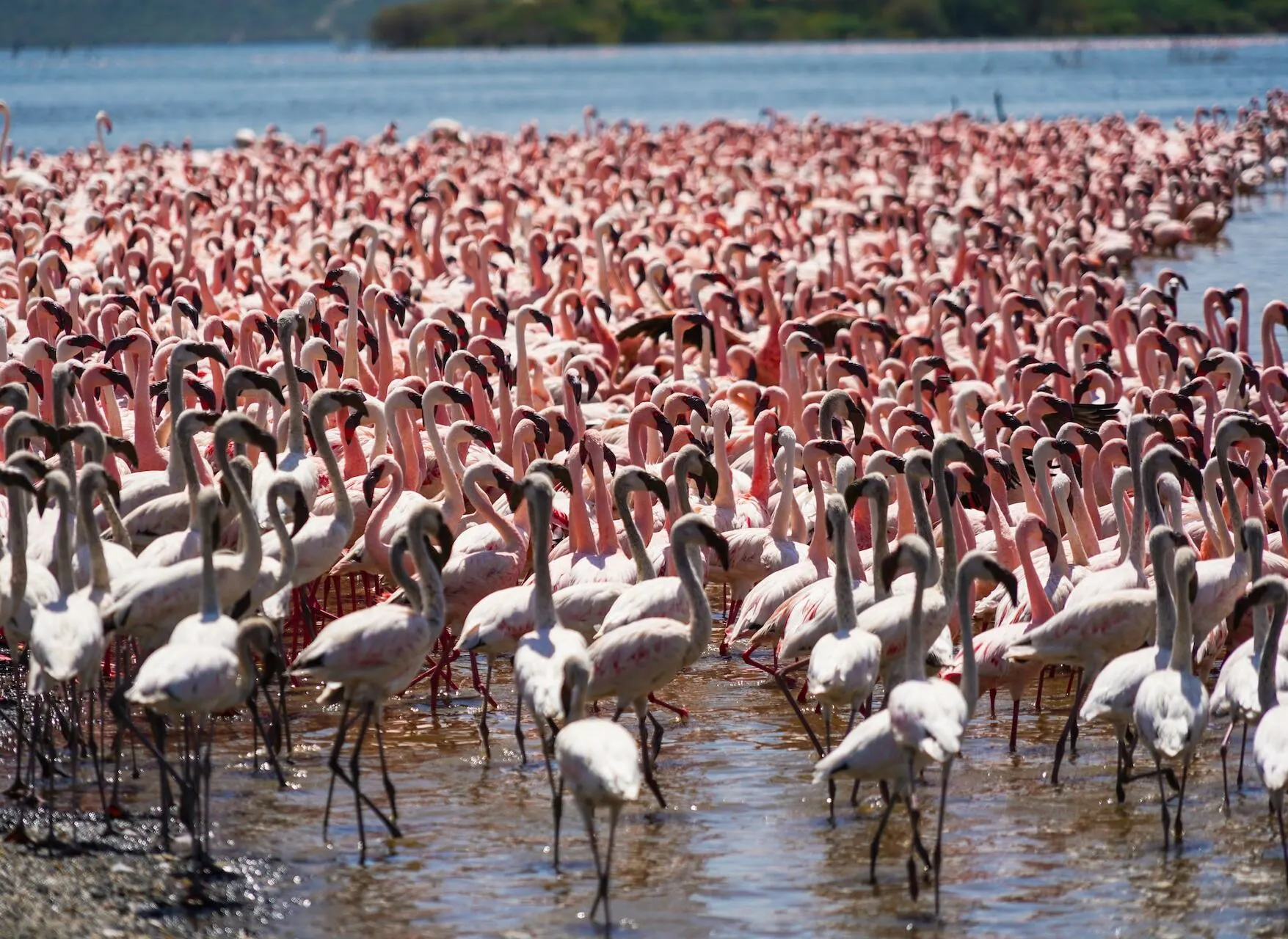
Habitat and Distribution
Where you can find Flamingo?
These elegant birds are commonly found in saline and alkaline lakes, mudflats, and lagoons, showcasing their adaptability to diverse aquatic habitats. Lake Nakuru in Kenya and Lake Natron in Tanzania are notable locations where these flamingos thrive, creating spectacular displays against the scenic African landscapes.
Their distribution spans several countries, reflecting the versatile nature of their habitats. Beyond Kenya and Tanzania, African Flamingos are also observed in regions like South Africa, Namibia, and Botswana, where suitable wetland conditions support their feeding and breeding behaviors.
Fun fact about Flamingos
Social Swingers
Flamingos form massive flocks, sometimes numbering in the millions! They often stand on one leg to conserve energy and body heat while socializing.
Sleeping Style
Flamingos can sleep on one leg! They tuck their head under one wing and lock their ankle joint, allowing them to rest while still standing.
Fabulous flyers
Despite their long legs and awkward gait, flamingos are surprisingly strong fliers! They can reach speeds of 60 km/h and travel long distances in search of food and suitable nesting sites.
Nesting Ninjas
Flamingos build towering mud nests, sometimes exceeding 50 cm tall! These “mud volcanoes” provide a safe haven for their single egg, protected from predators and rising water levels.
Migration Pattern
Where do Flamingo roam?
During the breeding season, African Flamingos gather in large colonies at selected breeding sites, forming immense congregations. Lake Natron in Tanzania is one such renowned breeding location. Post-breeding, these birds embark on extensive journeys, seeking suitable feeding grounds. Lake Nakuru in Kenya is a key stopover where large numbers of flamingos congregate to feed on the abundant algae and invertebrates present in the lake.
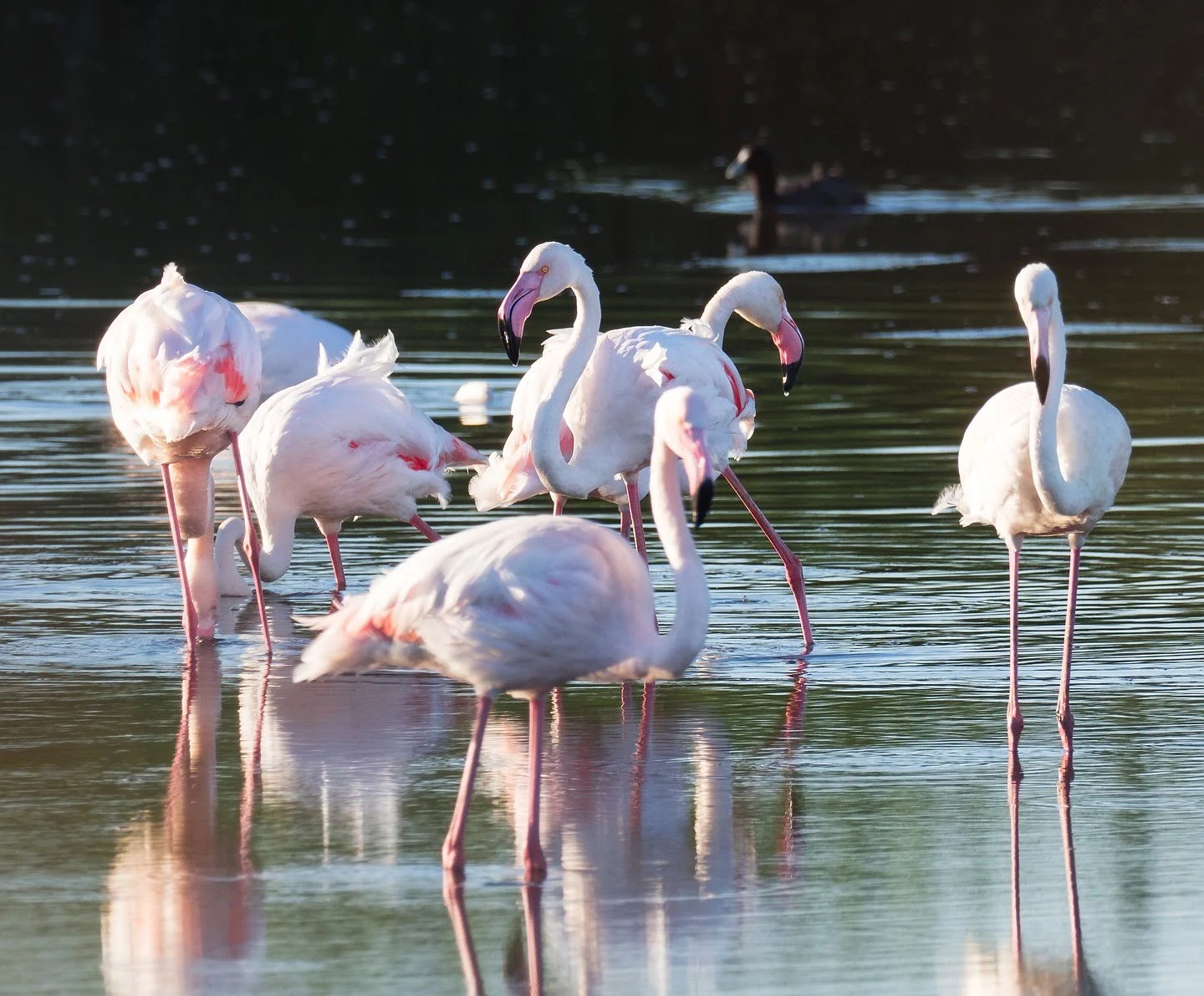
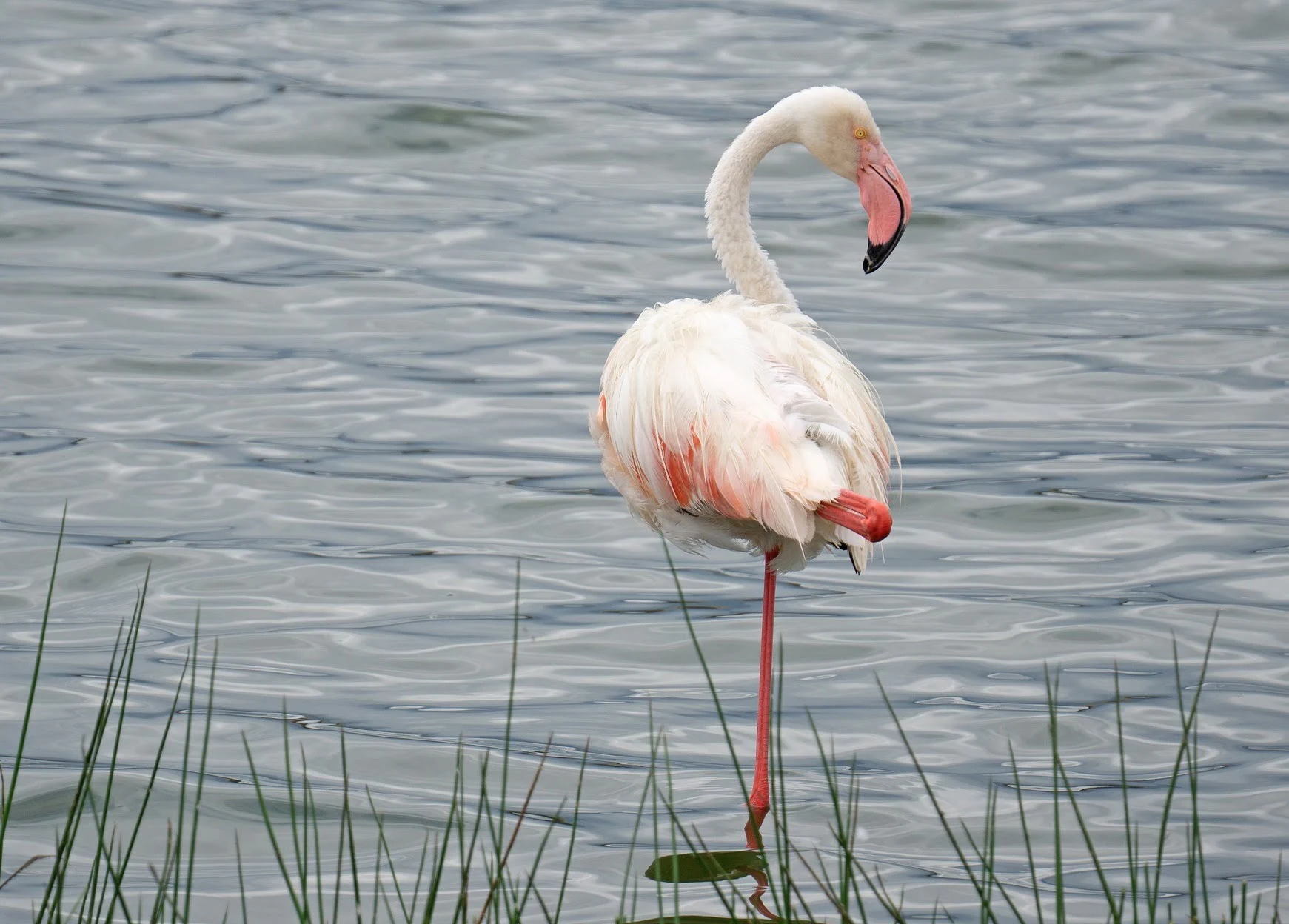
Vocalization Insights
Distinctive Call of the Flamingo
African Flamingos are not particularly known for their vocal prowess, as their communication primarily involves non-vocal behaviors. However, they do produce various sounds that contribute to their social interactions. These sounds include soft grunts, honks, and nasal trumpeting calls, especially during courtship displays or group activities.
The vocalizations of African Flamingos often serve as a means of maintaining group cohesion, coordinating movements, and expressing social hierarchies within the colony. These sounds are not elaborate but play a crucial role in the overall communication dynamics among the flock.

Prepare to witness the enchanting beauty of the African Flamingo! Engage with our team to embark on an extraordinary journey
Frequently Asked Questions
What gives flamingos their pink color?
The pink color of flamingos comes from the pigments in the food they eat, specifically carotenoids found in algae and crustaceans. The more carotenoids they consume, the pinker they become.
Why do flamingos stand on one leg?
The exact reason for this behavior is not entirely clear, but it is believed that standing on one leg helps flamingos conserve body heat. It also allows them to rest one leg at a time while standing in shallow water.
What is the best time of year to see flamingos in Africa?
The best time to see flamingos in Africa is during the dry season, which is typically from May to November. During this time, the water levels in the lakes and lagoons are lower, which concentrates the flamingo population and makes them easier to see.
What are the different species of flamingos in Africa?
There are six species of flamingos in the world, and three of them are found in Africa. These are:
- The greater flamingo (Phoenicopterus roseus)
- The lesser flamingo (Phoenicopterus minor)
- The Chilean flamingo (Phoenicopterus chilensis)
How do I book safari with Big Cats Safari?
Booking a safari with us is a straightforward process. Simply visit our website, select your preferred destination and safari package, and follow the step-by-step booking instructions provided. It’s quick and easy.
